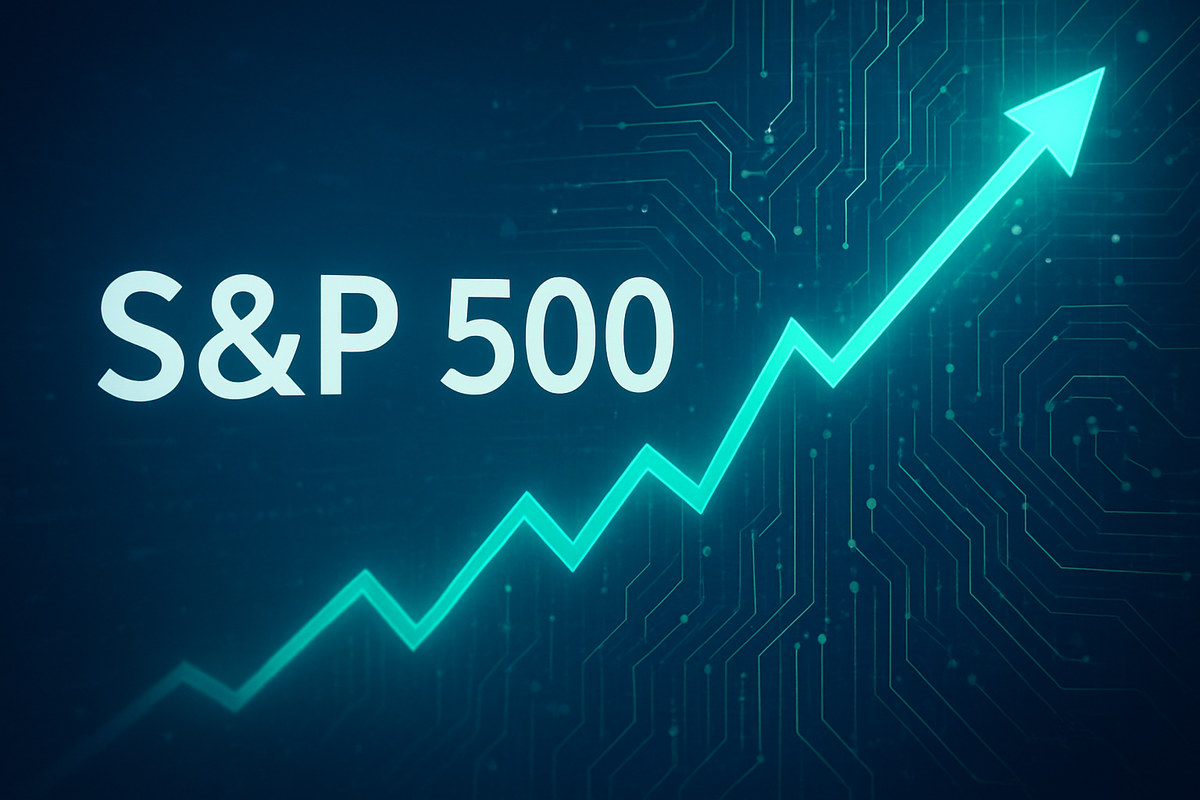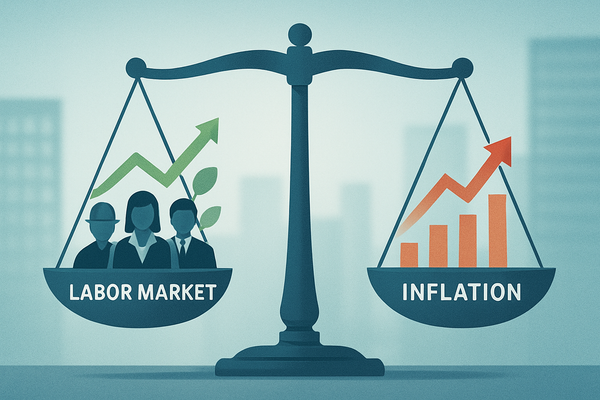S&P 500 Soars into November, Tech Giants Lead the Charge

The U.S. stock market has kicked off November 2025 with considerable momentum, as the S&P 500 index continues its upward trajectory, largely propelled by the robust performance of its technology sector. This strong start to the month extends a significant rally, reflecting persistent investor optimism and a clear leadership role for the market's most innovative companies, particularly those at the forefront of artificial intelligence (AI) development.
As of November 3, 2025, the S&P 500 (SPX) has shown resilience, building on a strong October. This surge underscores a compelling narrative of technological advancement and corporate profitability driving market expansion, even as broader market participation shows signs of divergence. The concentrated gains, while impressive, hint at underlying dynamics that warrant closer examination from investors and market watchers alike.
Tech-Fueled Ascent: A Detailed Look at the Market's Early November Surge
The start of November 2025 has seen the S&P 500 continue its impressive climb, driven predominantly by a handful of mega-cap technology companies. On November 1, 2025, the S&P 500 closed at approximately 6,840.20 points, marking a daily gain of 0.26%. This momentum carried into November 3, 2025, with the index further rising to 6,865 points, a 0.36% gain from the previous session, nearing its all-time high. The technology-heavy Nasdaq Composite (COMP) mirrored this strength, closing at 23,724.96 points on October 31, 2025, and adding 0.61% on November 1st, before gaining another 0.9% on November 3rd.
This robust performance follows a strong October, where the S&P 500 advanced by 2.3% and the Nasdaq surged 4.7%, marking their longest monthly winning streaks in years. Year-to-date, the S&P 500 has achieved an impressive gain of over 16%, while the Nasdaq Composite is up nearly 22%. This rally has been overwhelmingly led by the "Magnificent Seven" companies: Apple (NASDAQ: AAPL), Microsoft (NASDAQ: MSFT), Alphabet (NASDAQ: GOOGL), Amazon.com (NASDAQ: AMZN), Meta Platforms (NASDAQ: META), NVIDIA (NASDAQ: NVDA), and Tesla (NASDAQ: TSLA). These tech giants collectively account for approximately 35% of the S&P 500's total market capitalization, with NVIDIA's market capitalization notably surpassing $5 trillion in early November, cementing its role as a primary force lifting the market.
Initial market reactions, while largely positive, also reveal a critical underlying trend: the concentration of these gains. The S&P 500 Equal-Weighted Index, which gives all stocks equal influence regardless of their size, declined by 1.75% for the week ending November 1st. This significant underperformance compared to the market-capitalization-weighted S&P 500 highlights that while the headline indices are surging, the majority of stocks within the index are not participating in the rally, indicating a narrow market breadth and a heavy reliance on the performance of a select few mega-cap tech stocks.
Winners and Losers: The Concentrated Impact of a Tech-Led Rally
The current tech-led rally in the S&P 500 has created a clear dichotomy in market performance, with a distinct set of winners and a broader segment of companies relatively losing out. At the forefront of the winners are, unequivocally, the "Magnificent Seven" technology giants. These companies, deeply entrenched in AI, cloud computing, and digital transformation, have seen their valuations soar, attracting substantial investment capital. For instance, Amazon (NASDAQ: AMZN) surged after reporting better-than-expected third-quarter results, driven by accelerated growth in its AWS cloud computing arm, a key beneficiary of AI infrastructure spending. Similarly, Alphabet (NASDAQ: GOOGL) saw positive investor reaction with a 33% surge in earnings. NVIDIA (NASDAQ: NVDA) continues its meteoric rise, fueled by insatiable demand for its AI chips. This dynamic enhances their market capitalization, strengthens their competitive position, and provides ample resources for further innovation and expansion, particularly in high-growth areas like AI.
Conversely, the market's reliance on these few behemoths means that many other companies, even within the broader tech sector or in other industries, are relatively underperforming. While some large and mid-cap technology companies with strong fundamentals might experience spillover benefits, smaller, less established tech firms struggle to attract the same level of investor attention and capital. The starkest evidence of this divergence comes from the S&P 500 Equal-Weighted Index's decline, indicating that a significant portion of individual stocks across various sectors are not participating in the rally.
Companies outside the "Magnificent Seven," particularly those in traditional industries such as utilities, industrials, financials, and consumer staples, often classified as "value" stocks, are experiencing muted gains or even declines. These sectors are generally less sensitive to rapid technological advancements and are often overlooked when investors flock to growth-oriented tech. This scenario can lead to capital outflows or simply a failure to attract new investment, resulting in stagnating valuations and increased pressure to demonstrate competitive advantage in a market increasingly dominated by tech. The market's narrow breadth suggests that while the overall index looks strong, the underlying health of a vast number of companies is not as robust, creating a challenging environment for diversified portfolios.
Broader Implications: AI's Grip, Regulatory Shadows, and Historical Echoes
The S&P 500's tech-led rally in early November 2025 is more than just a market event; it's a powerful indicator of broader industry trends and economic shifts. At its core, this surge underscores the pervasive influence of Artificial Intelligence as a transformative technology. The "AI Gold Rush" has channeled massive capital into companies pioneering AI development and deployment, particularly those involved in advanced chips, software, and cloud infrastructure. This continuous investment and innovation are driving unprecedented demand for AI infrastructure, ensuring a robust ecosystem for companies like TSMC and other chip manufacturers who are direct beneficiaries of this expansion.
However, this AI-driven growth is inextricably linked to a concerning trend: increasing market concentration. The "Magnificent Seven" now represent a disproportionately large share of the S&P 500's market capitalization, a level of concentration that surpasses even the peak of the dot-com bubble. This dominance creates significant ripple effects. For competitors, it forces an accelerated pace of AI investment, leading to an innovation race that favors well-resourced tech giants. Smaller businesses face the challenge of competing against these behemoths, risking acquisition or marginalization. For partners, the AI boom presents immense opportunities, with hardware providers and cloud computing rivals intensifying their AI-focused offerings, leading to both innovation and higher capital expenditures across the industry.
The immense power and expanding influence of Big Tech, fueled by rapid AI advancements, are also intensifying regulatory scrutiny worldwide. Governments are increasingly concerned about market dominance, leading to discussions and proposals for antitrust actions against alleged anti-competitive practices, with cases against Google (NASDAQ: GOOGL) and scrutiny of Apple (NASDAQ: AAPL) and NVIDIA (NASDAQ: NVDA). While some advocate for a free environment to foster AI innovation, the rally could also highlight the need for thoughtful approaches to AI safety, governance, and workforce adaptation.
Historically, this tech-led market environment draws comparisons to the dot-com bubble of the late 1990s. Both periods are characterized by a transformative technology (internet then, AI now) driving substantial growth in tech stocks and significant outperformance of large-cap growth stocks. However, key differences exist: today's leading tech companies generally boast strong balance sheets, diverse revenue streams, and robust profitability from their AI projects, unlike many unprofitable ventures during the dot-com era. While current valuations are high, they are generally not as extreme as during the dot-com bubble, suggesting a more fundamental basis for growth, albeit one that still warrants caution.
The Road Ahead: Navigating a Dynamic Market Landscape
As the S&P 500 extends its tech-led rally into early November 2025, the market faces a critical juncture with various short-term and long-term possibilities. In the immediate future (late 2025 - early 2026), continued momentum is plausible, particularly if AI innovation maintains its rapid pace and corporate earnings remain robust. Seasonal tailwinds, easing trade tensions, and accommodative monetary policy from the Federal Reserve could provide further support. However, market fatigue and a minor correction (5-8%) are also strong possibilities, given the extended rally and concentrated gains. Increased volatility and sector rotation, with investors moving out of overextended tech into undervalued sectors like financials or healthcare, could emerge.
Looking further into 2026 and beyond, the outlook becomes more nuanced, characterized by a "delicate balance of innovation and valuation." An optimistic scenario projects sustained growth, with the S&P 500 potentially reaching 7,000-7,800, driven by resilient earnings and AI-fueled productivity gains. Conversely, a bearish scenario warns of an "AI bubble" bursting, similar to the dot-com era, leading to a substantial correction as high valuations and potential macroeconomic headwinds weigh on equities. Capital Economics, for example, predicts such a burst in 2026, potentially leading to a market nosedive of over 30% if the "Magnificent Seven" fail to translate AI investments into tangible returns.
For companies, strategic pivots are crucial. Aggressive investment in AI is necessary, but demonstrating a clear return on investment will become paramount. Diversification of supply chains and revenue streams, coupled with an emphasis on strong fundamentals, cash flow, and operational resilience, will be essential to navigate potential economic slowdowns and geopolitical risks. Market opportunities will continue to arise in AI infrastructure, as well as in value and defensive sectors that have lagged. Challenges include persistent high valuations, concentration risk, macroeconomic headwinds like inflation and potential shifts in Fed policy, and increased regulatory pressures on large tech firms.
Wrapping Up: A Market at a Crossroads
The S&P 500's robust start to November 2025, overwhelmingly led by the technology sector, underscores a market deeply enthralled by the promise and power of Artificial Intelligence. Key takeaways reveal a sustained bullish momentum, with the S&P 500 and Nasdaq enjoying extended winning streaks and impressive year-to-date gains, largely fueled by the "Magnificent Seven" tech giants and their massive AI investments. Favorable macroeconomic conditions, including recent interest rate cuts by the Federal Reserve and easing trade tensions, have further buoyed investor sentiment. However, the pronounced concentration of these gains, evident in the underperformance of the equal-weighted S&P 500, signals a market with narrow breadth and potential valuation concerns, prompting comparisons, albeit with crucial differences, to the dot-com era. The strategic restraint shown by investors like Warren Buffett, amassing record cash reserves, serves as a subtle yet significant reminder of underlying caution amidst the market's euphoria.
Moving forward, the market appears poised for continued growth, particularly within the AI-driven tech sector, with expectations for double-digit earnings growth in 2026. However, the path ahead is not without its challenges. The significant concentration of gains presents a vulnerability, making the overall market susceptible to sharp reversals if the leading tech companies falter or if investor sentiment shifts rapidly. Macroeconomic headwinds, including potential shifts in Fed policy, and ongoing geopolitical developments, remain critical factors that could influence market trajectory.
The lasting impact of this period will likely be a further entrenchment of big tech's dominance in market capitalization and influence, with AI cementing its role as a primary engine of economic performance and technological advancement. This could reshape industries and consumer behavior for years to come, but also raises important questions about market health and stability.
Investors in the coming months should closely watch the breadth of the rally, seeking signs of broader market participation beyond the mega-cap tech stocks. Interest rate policy and inflation data, alongside corporate earnings beyond the tech sector, will provide crucial insights into overall economic health. Geopolitical developments and valuation levels, particularly in the tech sector, demand vigilance. Finally, the market will be keenly observing whether the massive AI investments by tech giants translate into tangible returns and broader monetization strategies, which will be key to sustaining this rally in the long term.
This content is intended for informational purposes only and is not financial advice



